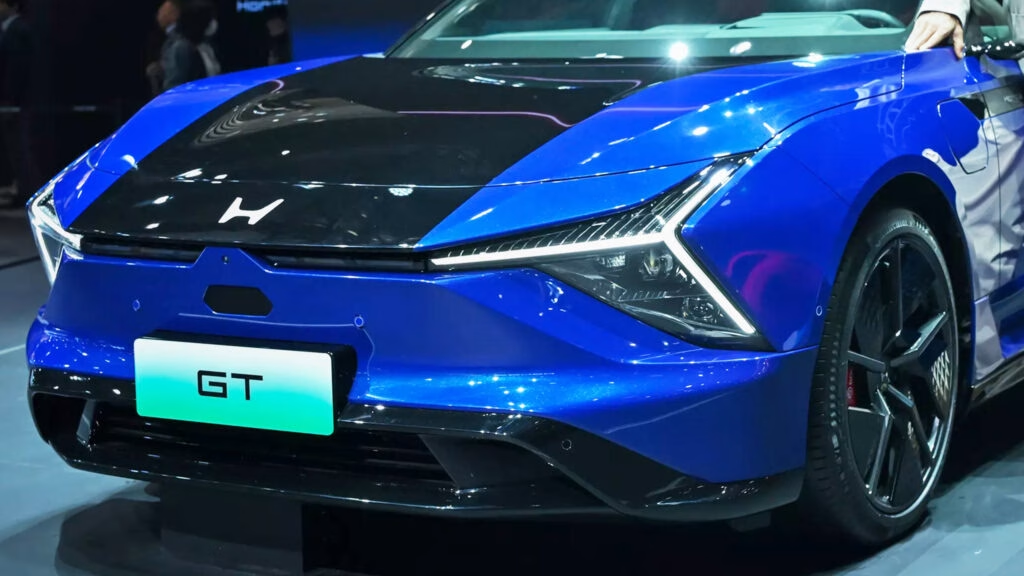Why Is Dongfeng Selling Its Stake in the Honda Engine Venture?
For over 25 years, Dongfeng and Honda have been partners in China, running a joint venture that churned out internal combustion engines for a booming car market. But times change—and so do priorities. Dongfeng is now putting its entire 50 percent stake in this engine-making venture up for sale, signaling a major shift in strategy. The reason? China’s car industry is in the midst of a seismic transition, with traditional engine sales plummeting and electric vehicles (EVs) taking center stage.
The numbers tell the story. The joint venture’s assets were valued at 5.4 billion yuan (about $752 million) last year, but it’s also saddled with 3.3 billion yuan ($459 million) in debt. Add in a workforce of 827 employees and you’ve got a sizable operation facing an uncertain future. Dongfeng’s move to list its stake on the Guangdong United Assets and Equity Exchange—without even setting a reserve price—shows just how eager the company is to pivot away from the old model. The clock is ticking, too, with a sale deadline set for September 12.
What’s Driving the Shift Away from Combustion Engines in China?
China’s auto market has always been fiercely competitive, but the last few years have been a whirlwind. Local brands like BYD and NIO have surged ahead, investing heavily in EV technology and capturing the imagination (and wallets) of Chinese drivers. Meanwhile, established players like Dongfeng and even global giants such as Honda have struggled to keep pace.
Consider this: Dongfeng’s annual vehicle sales have tumbled from 3.8 million in 2016 to just 1.5 million last year, across all its brands and joint ventures. That’s not just a dip—it’s a freefall. The culprit? A rapid consumer shift toward electric vehicles, spurred by government incentives, stricter emissions regulations, and a growing sense that the future is electric. According to the China Association of Automobile Manufacturers, EVs made up over 30 percent of new car sales in China in 2023, and that share is only expected to grow.
How Are Japanese Carmakers Like Honda Responding to the EV Boom?
Honda, like many Japanese automakers, has found itself caught between two worlds. On one hand, it has decades of expertise in building reliable combustion engines. On the other, it faces mounting pressure to electrify its lineup—fast. The partnership with Dongfeng was once a cornerstone of Honda’s China strategy, but with the engine business losing steam, Honda is now rethinking its approach.
Earlier this year, Honda rolled out a new EV developed with Dongfeng specifically for Chinese consumers. At the same time, it launched another electric model through its joint venture with GAC Group. These moves show Honda isn’t just dipping its toes into the EV pool—it’s diving in headfirst. Industry analysts point out that while Honda’s legacy partnerships are under strain, its willingness to adapt could help it stay relevant in a market that’s evolving at breakneck speed.
What Happens Next for the Dongfeng-Honda Joint Venture?
With Dongfeng stepping away, the future of the engine factory—and its 827 employees—hangs in the balance. Honda has a few options on the table. It could buy out Dongfeng’s stake and take full control of the engine operation, though that would mean shouldering the venture’s hefty debt and navigating a shrinking market for combustion engines. Alternatively, Honda might seek a new local partner, hoping to breathe fresh life into the business or pivot the factory toward EV components.
For now, Honda’s broader automobile production partnership with Dongfeng remains intact, so it’s not a total breakup. Still, the writing’s on the wall: the old model of joint ventures built around combustion engines is fading, and the next act will almost certainly revolve around electrification.
What Does This Mean for Workers and the Broader Industry?
Whenever a major joint venture unravels, there’s a ripple effect—especially for the people on the ground. The 827 workers at the engine plant face an uncertain future, and their fate will likely depend on whether Honda finds a new partner or repurposes the facility for EV production. This isn’t just a Dongfeng-Honda story, either. Across China, legacy automakers are grappling with similar challenges, as factories that once hummed with the sound of piston engines now face the prospect of retooling or closure.
Industry experts suggest that retraining and upskilling workers for EV manufacturing will be key. The Chinese government has already launched several initiatives to support this transition, recognizing that a skilled workforce is essential for maintaining the country’s edge in the global auto market.
Are There Lessons for Other Global Automakers?
Absolutely. The Dongfeng-Honda split is a cautionary tale for any automaker still clinging to the old playbook. The pace of change in China’s car market is relentless, and those who fail to adapt risk being left behind. Flexibility, innovation, and a willingness to embrace new technologies are now non-negotiable.
It’s also a reminder that joint ventures—once seen as the best way for foreign brands to crack the Chinese market—are no longer a guarantee of success. As local players grow more sophisticated and the regulatory landscape evolves, global automakers will need to rethink their strategies, forge new alliances, and double down on electrification.
The Big Takeaway for the Auto Industry
The Dongfeng-Honda story isn’t about a failed partnership—it’s about recognizing when the game has changed and having the guts to make bold moves. As China races toward an electric future, the companies that thrive will be those willing to leave old habits behind and reinvent themselves for a new era. The big takeaway? Staying competitive isn’t about perfection—it’s about smarter adjustments. Start with one change this week, and you’ll likely spot the difference by month’s end.

